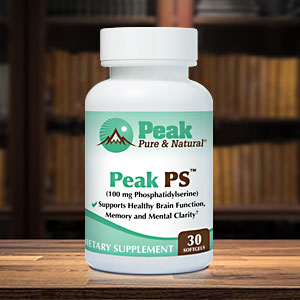Get Easy Health Digest™ in your inbox and don’t miss a thing when you subscribe today. Plus, get the free bonus report, Mother Nature’s Tips, Tricks and Remedies for Cholesterol, Blood Pressure & Blood Sugar as my way of saying welcome to the community!
How tomatoes could make Parkinson’s treatment more accessible

L-dopa remains the gold standard treatment for Parkinson’s disease. But using L-dopa over the long term can lead to some pretty nasty side effects. Researchers have been exploring naturally derived alternatives to chemical L-dopa, and they’ve come up with a potential solution that can save money and possibly sidestep its adverse reactions…
If you have been diagnosed with Parkinson’s disease, chances are you have been prescribed some form of L-dopa, also known as levodopa. An amino acid precursor of the neurochemical dopamine, L-dopa is used to compensate for the depleted supply of dopamine in Parkinson’s patients.
Since its introduction in 1967, L-dopa has been the gold standard therapy for Parkinson’s disease. The World Health Organization has declared it one of the essential medicines, and its market value is in the hundreds of billions of dollars.
However, L-dopa has its drawbacks. Long-term use of the drug can cause levodopa-induced dyskinesia, a potentially incapacitating condition subjecting the sufferer to involuntary rapid jerking and twisting, or slow and extended muscle spasms. Prolonged use of L-dopa has also been associated with confusion, hallucinations, delusions, psychosis and agitation, particularly in elderly Parkinson’s patients. Because nausea is a common side effect of L-dopa usage, it’s often prescribed with carbidopa (brand name Sinemet) to offset that reaction.
The most common form of L-dopa is produced by chemical synthesis, but it can also be found in some natural sources. However, only a few plants have been identified as containing measurable quantities of the molecule, mainly in seeds.
Now, thanks to the efforts of a team of scientists led by the UK-based John Innes Centre, a new and promising plant-based source of L-dopa has emerged…
A Parkinson’s-treating tomato?
Scientists have produced an L-dopa-enriched tomato, creating what could become a new, affordable source of this essential medicine for nations across the globe, including those where access to pharmaceutical drugs is restricted because of cost.
While L-dopa remains the gold standard medication for treating Parkinson’s disease, its chemically synthesized form can cause side effects in some people, including nausea and behavioral complications like hallucinations and psychosis. By producing L-dopa naturally, this genetically modified (GM) tomato could be a good standardized, controlled source of L-dopa free of adverse reactions.
The research team picked the tomato because it is a widely cultivated crop that can be used for scaled-up production. They modified the tomato by introducing a gene responsible for synthesizing L-dopa in beetroot, which plays a role in producing the pigments betalains.
L-dopa is produced from tyrosine, an amino acid found in many foods. The gene inserted by the research team encoded a tyrosinase, an enzyme that harnesses tyrosine to build molecules such as L-dopa. This raised the level of L-dopa in the fruit of the tomato plant and led to higher yields than those associated with L-dopa production in the whole plant.
The tomato fruit achieved 150 mg of L-dopa per kg, comparable to those observed in other L-dopa-accumulating plants but lacking some of the drawbacks previously hampering plant metabolic production of the drug.
For instance, velvet beans contain up to 10% of L-dopa in their seeds. But the plant is covered in hairs containing an irritating chemical that can cause allergic reactions in field workers who harvest the crop. And the beans themselves cause elevated levels of tryptamines, which can cause hallucinations in Parkinson’s patients.
Researchers say the next step is to create a production pipeline to extract L-dopa from the tomatoes and purify it into the pharmaceutical product.
Parkinson’s disease is a growing problem in developing countries, where many people can’t afford the $2-a-day price of synthetic L-dopa. Professor Cathie Martin, co-author of the study, explains that through the GM tomatoes, these countries could scale up production of L-dopa at a relatively low cost.
“The idea is that you can grow tomatoes with relatively little infrastructure,” Prof. Martin says. “As GMOs (genetically modified organisms) you could grow them in screen houses, controlled environments with very narrow meshes, so you would not have pollen escape through insects.
“A local industry could prepare L-dopa from tomatoes because it’s soluble and you can do extractions,” she adds. “Then you could make a purified product relatively low tech which could be dispensed locally.”
Natural ways to enhance L-dopa
There are natural supplements that can help support L-dopa and reduce some of the side effects associated with the drug. For instance, L-dopa treatment appears to down-regulate brain levels of the serotonin precursor tryptophan. When given 150 to 300 mg of tryptophan or 5-HTP supplements daily, many patients on L-dopa experience improved mood and functional abilities.
A daily dose of between 50 and 100 mg of vitamin B6 with 30 mg of zinc has been shown to enhance the effectiveness of L-dopa and carbidopa treatment in about 40 percent of patients. Also, a study of 60 Parkinson’s disease patients showed those taking 300-400 mg of vitamin B6 daily had a significant reduction of tremors, with 12 experiencing complete disappearance.
Sources:
Tomatoes offer affordable source of Parkinson’s disease drug — John Innes Centre
Metabolic engineering of tomato fruit enriched in L-DOPA — Metabolic Engineering
Levodopa (L-Dopa) — StatPearls
Levodopa — Parkinson’s Foundation
New Drug Shows Promise for Levodopa-Induced Dyskinesia — Parkinson’s Foundation
Natural Therapies for Brain Health and Parkinson’s — Easy Health Options













